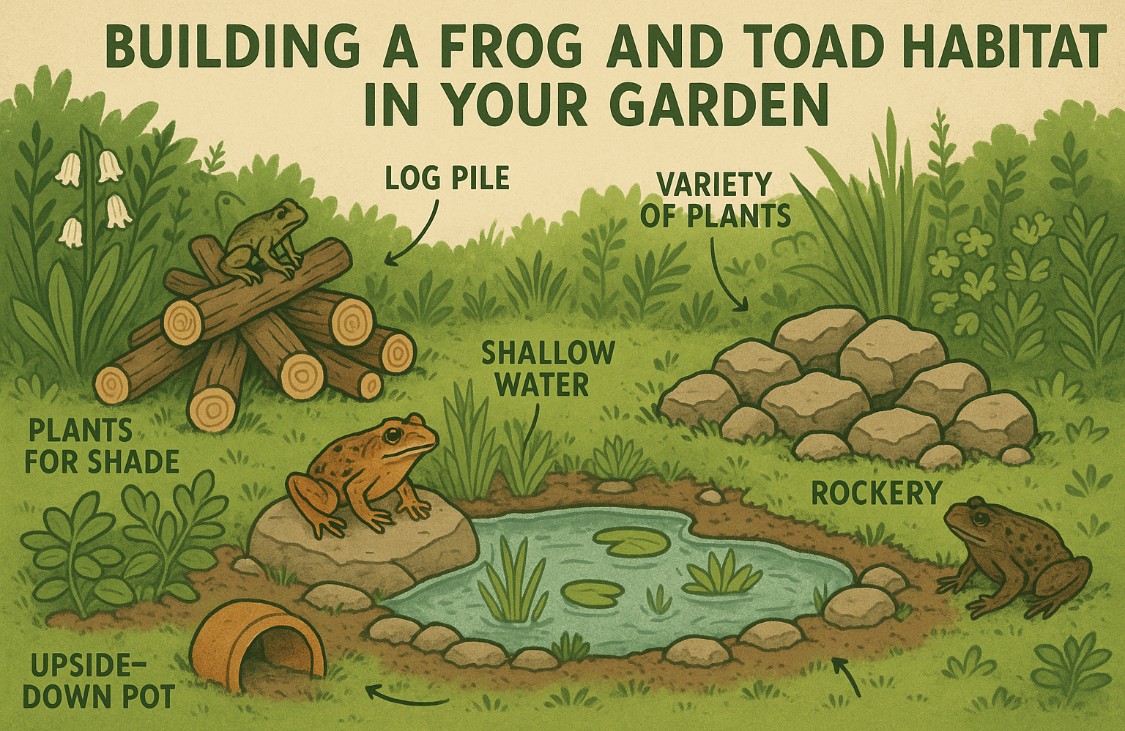Amphibian populations are among the most threatened group of species worldwide, driven by a combination of factors including habitat loss, disease, and climate change. These factors are pushing many species dangerously close to extinction.
Found on every continent except Antarctica, amphibians thrive in a wide range of habitats, from tropical rainforests and grasslands to deserts, wetlands, and even high-altitude environments like the Himalayas. Frogs, toads, newts, and salamanders have adapted to occupy niches across the globe.
Frogs need food, water, shelter and a place to reproduce for their survival. They require access to freshwater sources so that they can maintain their moist skin, stay hydrated and lay their eggs safely. They also need to be surrounded by damp earthy areas where they can easily find insects to hunt and consume.
Concern and curiosity about amphibians are not something new. In June 1768, the naturalist Gilbert White wrote to fellow scholar Thomas Pennant about these creatures. In his letter, White discussed the migration of frogs, their breeding habits, and examined how they would grow. He also shared an anecdote he had heard that some ladies had raised a toad, and after regularly feeding it, the creature grew to a “monstrous size.”
As time went on, and in a letter dated July 14th, 1776, White discussed the migration of frogs again, stating: “Young frogs migrate and spread around the ponds for more than a furlong: they march about all day long, separating in pursuit of food; & get to the top of the hill, & into the N. field.”
Amphibians play an integral role when it comes to our ecosystems and act as key indicators of environmental health because they are highly sensitive to any changes. One example being that they have a dual life cycle which means they spend parts of their lives in both the water and on land, making them vulnerable to pollution in these different environments.
They are vital food web components, being both predators and prey which provides balance to the ecosystem as they control insect populations and are a food source themselves to other animals.
How can we help the species to thrive and survive?
One of the most effective ways to support amphibian populations is by transforming our own gardens and green spaces into safe and welcoming habitats. Even a small garden or pond can become a vital refuge for frogs, toads, and newts, particularly in urban and suburban areas where natural wetlands are increasingly rare.
A garden pond is one of the best features you can add, especially if it has gently sloping sides to easily allow amphibians to enter and exit. It doesn’t have to be large, even a shallow body of water will attract them.
You should avoid adding fish as they often eat amphibian eggs and tadpoles. Native aquatic plants such as water mint, marsh marigold, or water forget-me-not help to oxygenate the water and provide shelter.
Surrounding the pond with a variety of plants, logs, leaves, and rocks will give amphibians places to hide, forage, and hibernate. Amphibians thrive in damp, shaded areas, so planting ground cover and creating shaded corners will make your garden even more inviting to these hopping friends.

You should avoid using pesticides, herbicides, or chemical fertilisers as these substances can harm amphibians directly or contaminate the water sources they rely on. Embracing natural pest control methods helps to protect these creatures and the broader garden ecosystem.
Connectivity is also important, so you should try to leave gaps in fences or create ‘wildlife corridors’ so that they can move between gardens safely. In the winter when the temperatures plumet and become freezing, a small log pile, compost heap, or stone wall can offer critical shelter for toads and frogs.
By even making gentle changes, you can turn your outdoor space into a mini amphibian sanctuary and in return you’ll benefit from their natural pest control, the quiet joy of spotting them in your pond, hearing them croak, but most importantly, knowing you’re helping to make a fundamental difference to their livelihoods.
